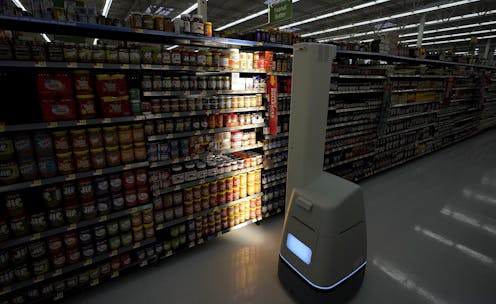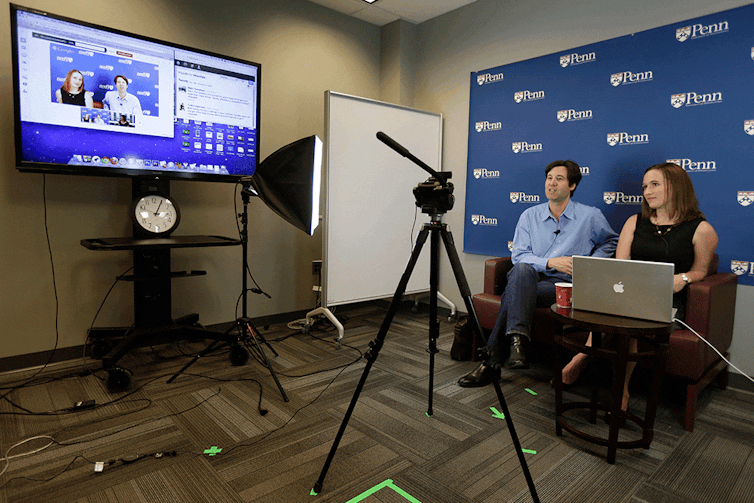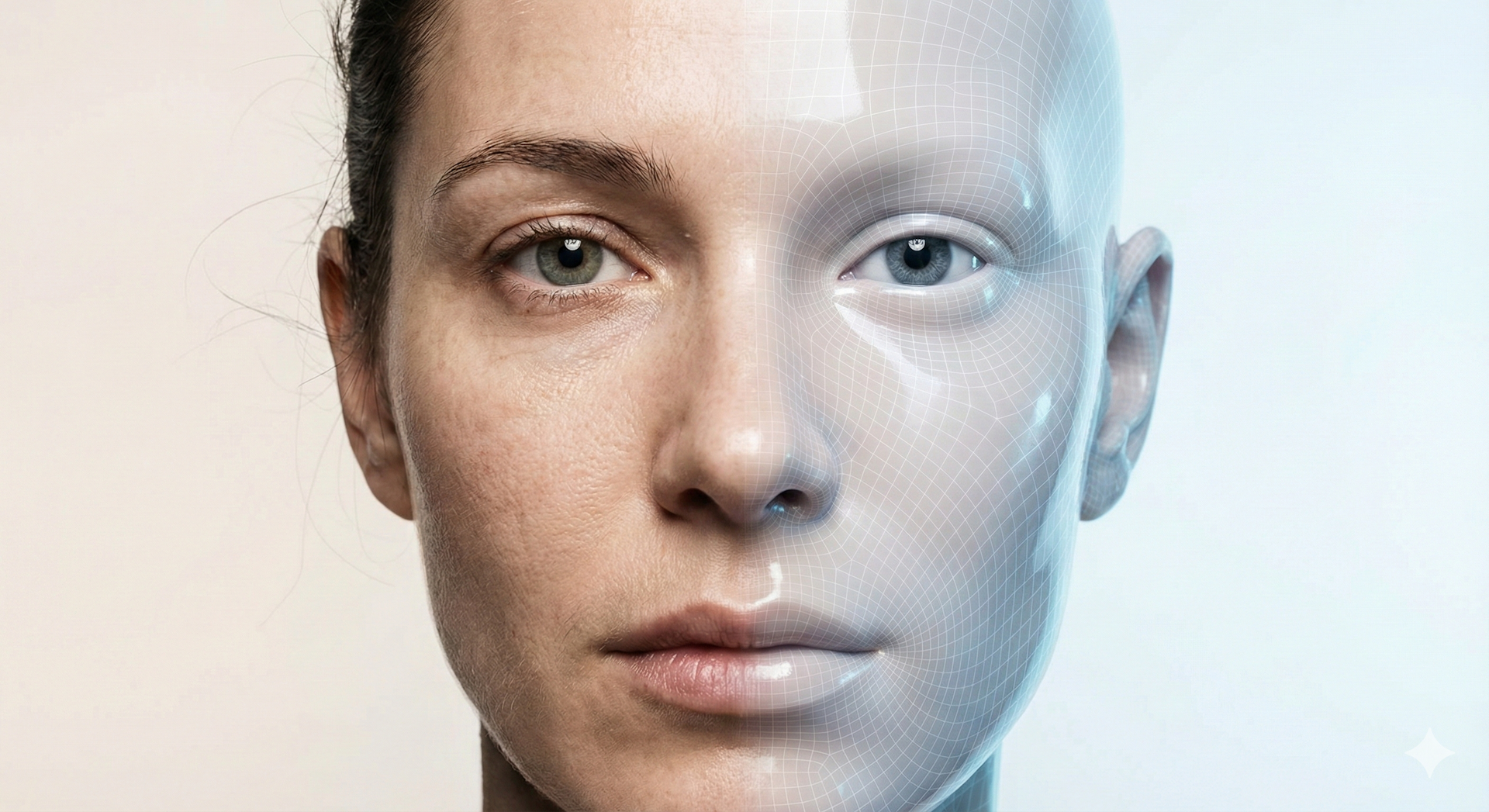Retailers like Walmart are embracing robots – here's how workers can tell if they'll be replaced
Two management experts devised a new way to predict whether your job is likely to get stolen by a robot – and what you can do about it.

Walmart recently said it plans to deploy robots to scan shelves, scrub floors and perform other mundane tasks in its stores as the retail giant seeks to lower labor costs.
While the retail giant did not say which jobs, if any, might be lost as a result, the announcement – and the many more surely to follow at other big box retailers – begs the question: How can workers prepare for a future of increasingly automated work?
Millions of today’s jobs are expected to be affected by artificial intelligence and automation as part of the “fourth industrial revolution.” But just which occupations are most at risk has been a guessing game among economists, futurists and scholars trying to predict winners and losers.
As experts on workers’ identities and careers and industry and technological change, we developed a new tool we believe will help workers more accurately determine the fate of their professions – and figure out how best to prepare.
Who will be hurt
A host of research studies have examined where industrial revolution 4.0 is likely to wield its greatest impact.
Driven by a focus on cost and efficiency, most predictions pit one group of workers against another. For example, blue collar versus white collar, skilled versus unskilled, college-educated versus not college-educated and even predictions by race and gender.
While these broad groupings may grab headlines, they offer little guidance to individual workers at a time when, more than ever, individuals are expected to take responsibility for managing and driving their own careers.
Rather than focus on efficiency or cost, our research offers a more nuanced and sustainable tool for examining the fate of one’s profession: value.

Worker value
Our research is based on the idea that every individual’s work creates value in his or her day-to-day job.
That value may be something a customer pays for, may enable co-workers to do their own jobs or may help the company to function internally. In any case, every job provides some degree of worth or usefulness to another party. The value is constant, but the way it is created and delivered to the end user can be threatened by automation and AI. Only after we’ve evaluated that can we determine how the coming wave of technological change will affect a job’s future prospects. To assess these threats, we need to break value down into two key components.
First, value is created by the skills required to complete a job, such as a programmer’s ability to code or a painter’s knack at prepping a wall and applying paint cleanly. In general, we’ve found that when skills are standardized, they are more likely to be threatened by automation or AI.
The second component of value, though, is separate from skills. It’s the method of delivering a job’s value to someone else, which can also be threatened by new technology. We call this “value form.”
For example, while a college professor’s skills and expertise in a particular domain may not be under immediate threat, the form in which their value is delivered is certainly threatened by online learning platforms and the increased use of AI education tools.
By considering these two threats together, workers can better assess if their jobs are at risk.
Displaced or durable
Our framework has four categories: A job could be displaced, disrupted, deconstructed or durable depending on the level of threat facing its skills and value form.

Displaced signifies the jobs that are most in danger. Our analysis shows pharmacists, radiologists and librarians all belong in the displaced category.
Disrupted means the skills are highly threatened, but people desire the recognized or current method of delivery, which often involves a human interaction. Examples include fast food servers, accountants and real estate agents.
Deconstructed flips those two around: The skills are hardly standardized but automation poses a serious threat to how the job’s value is delivered. Photographers, college professors and livery drivers are in this category.
Durable jobs are the safest ones because both the skills and the value form are difficult or costly to automate. Lucky workers in this category include electricians, plumbers and physician assistants.
What we learn from value
In some ways, the value framework confirms what others have found.
For example, no one would have argued that shelf stockers at big box retailers like Walmart would be a safe job for years to come – as the retailer’s announcement confirms. Putting them in our framework, their primary skills of keeping inventory stocked and shelves clean are severely threatened because they are standardized and routine.
Furthermore, robots can deliver more value through automated transmission of inventory information. Thus, our model shows these workers will most likely be displaced.
However, our focus on value suggests that other predictions based merely on categories of at-risk jobs may be missing the mark. For example, some people predict many jobs are threatened simply because they are routine, non-college-educated or blue-collar, like plumbers, electricians and hospice workers. Yet, rewiring an electrical system in a historic home or caring for a hospice patient are nonstandard jobs that require a human to create and deliver value, which is why these jobs can be quite durable.
What workers can do
Once workers understand the value they create and the threat automation poses to their skills and value form, what actions can they take?
The common answer they’ve been given thus far involves encouraging them to engage in lifelong learning. But a focus on value the way our model does provides much more nuanced guidance.
Workers in deconstructed jobs, for example, don’t need new skills. They just need to learn to adapt existing skills to new forms of delivery. Conversely, workers in disrupted jobs need training to work alongside robots and AI systems during periods of transition.
And even if displaced workers – a fate that is likely to be on the horizon for Walmart’s shelf stockers – need to consider retraining, the traditional higher education system is not well suited for the future of work. Universities focus on the longer-term bachelor’s-to-master’s pathway. Rather, individuals need access to quick, modular and adaptable pathways to new jobs.
The 48-year-old parent who just lost his job as an accountant is not able to begin a new four-year degree program. But a three-month program to earn a cybersecurity certificate would be doable and all he needs.
The future of work is already here. Days after Walmart’s announcement, workers at Stop & Shop, a large regional grocery chain in the Boston area, are striking over increased automation. But we have time. Let’s worry less about robots and AI itself and more about the value workers can create in different jobs in a landscape that will continue to change for years to come. Value is the only constant.
The authors do not work for, consult, own shares in or receive funding from any company or organization that would benefit from this article, and have disclosed no relevant affiliations beyond their academic appointment.
Read These Next
Has the Fed fixed the economy yet? And other burning economic questions for 2026
As 2026 begins, uncertainty is at the top of everyone’s mind.
Who thinks Republicans will suffer in the 2026 midterms? Republican members of Congress
The president’s party almost always loses seats in the midterms. More than two dozen Republican House…
Deepfakes leveled up in 2025 – here’s what’s coming next
After a year of fast advances, deepfakes are entering a new era defined by real-time interaction with…






